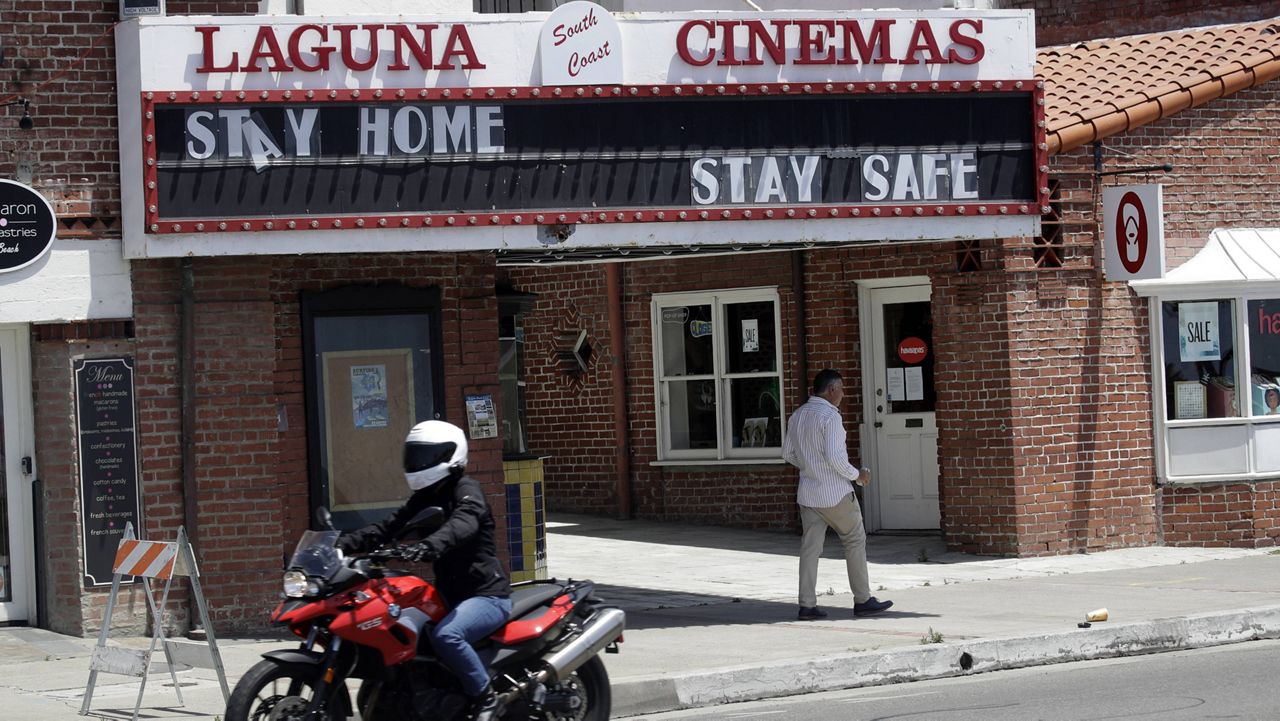SANTA ANA (CNS) — Orange County health officials Thursday reported seven more COVID-19 fatalities and 158 newly diagnosed cases, raising the death toll to 1,268 and the cumulative case total to 53,751.
The reporting of COVID-19 fatalities comes from multiple hospitals and the Orange County coroner's office and are often delayed, so the seven deaths happened over the past few weeks. But the Orange County Health Care Agency has reported 61 fatalities since Sunday, following 77 last week.
What You Need To Know
- 61 fatalities have been reported since Sunday, following 77 last week
- Hospitalizations dropped from 172 on Wednesday to 158 on Thursday
- The positivity rate, which is reported each Tuesday, stands at 3.1%, the same as last week, but the daily case rate per 100,000 people went up from 3.6 to 4.4
- The county will remain in the red tier for at least another two weeks
Of the seven deaths reported Thursday, two were skilled nursing facility residents.
Since the pandemic began, 457 of the fatalities have involved skilled nursing facility residents and 89 were assisted living facility residents.
The deadliest day for the county since the pandemic began remains Aug. 3, when 19 people died. The last day of double-digit deaths was Aug. 31, when 10 people died.
The deaths are "overwhelmingly related to the surge in cases a couple of months ago," said Dr. Matthew Zahn, medical director of the county's communicable disease control division. "Our hospital and ICU numbers (since then) have really gone down, which is really important."
Hospitalizations dropped from 172 on Wednesday to 158 on Thursday, with the number of patients in intensive care inching down from 48 to 45. The county has 31 percent of its intensive care unit beds available and 66 percent of its ventilators. The change in 3-day average for hospitalized patients rate increased from 3.8 percent to 5.4 percent on Thursday.
The positivity rate, which is reported each Tuesday, stands at 3.1 percent, the same as last week, but the daily case rate per 100,000 people went up from 3.6 to 4.4, which is higher than the cutoff of 3.9 to qualify for the state's orange tier.
It means the county will remain in the red tier for at least another two weeks, but there is hope the trend will continue and the county will be able to move up to the orange tier by mid-October.
Last Thursday's and Friday's numbers put the county over the top, said Dr. Clayton Chau, the director of the Health Care Agency and the county's chief health officer.
"We've had a few days of uptick in numbers, small but significant to affect our tier system," Chau told the Orange County Board of Supervisors on Tuesday. Chau said it appears that Labor Day gatherings led to the increase.
One of the thorniest problems is young adults renting out vacation residences for parties, Orange County CEO Frank Kim said Monday.
Students returning to school don't appear to have been an issue, Zahn said Thursday afternoon.
"At this point we see really minimal activity," Zahn said. "What we've seen so far is quite encouraging."
Kim said the increase in cases amounts to about 30 diagnoses a day. Officials have not seen anything in particular fueling the slight increase.
County Supervisor Lisa Bartlett said there is concern about a see- sawing back and forth between the red and orange tiers because if the county has to step back a tier, that locks it into place for at least three weeks even if the metrics match a less-restrictive tier.
State officials are expected on Friday to announce new guidelines for mass gatherings, including theme parks, concerts and sporting events. The expectation is that those types of activities will not be allowed until a county moves up to the least restrictive tier of yellow, which could take months.
Orange County board Chairwoman Michelle Steel criticized the state for "dragging its feet" on issuing reopening guidelines for theme parks like Disneyland in Anaheim and Knott's Berry Farm in Buena Park.
"We need these parks to reopen not for our children and tourists but our businesses and communities that rely on them," Steel said. "I am disappointed at the lack of progress California has made in this and every other area while other governments have made safe reopenings of their theme parks. California continues to delay and this has resulted in the loss of 28,000 jobs. All of this could have been avoided."
The OCHCA reported that 870,461 COVID-19 tests have been conducted, including 5,514 reported Thursday. There have been 48,545 documented recoveries.
To qualify for the orange tier, the positivity rate must be 2 percent -4 percent, and the case rate per 100,000 must be 1 percent -3.9 percent.
Moving to the orange tier means retail businesses could operate at full capacity, instead of 50 percent in the red tier. Shopping malls also could operate at full capacity, but with closed common areas and reduced food courts just as in the red tier.
The orange tier boosts capacity for churches, restaurants, movies, museums, zoos and aquariums from 25 percent capacity to half capacity. Gyms and fitness centers could boost capacity from 10 percent to 25 percent and reopen pools.
The orange tier also allows family entertainment centers like bowling alleys and wall-climbing to open indoors to 25 percent capacity.
